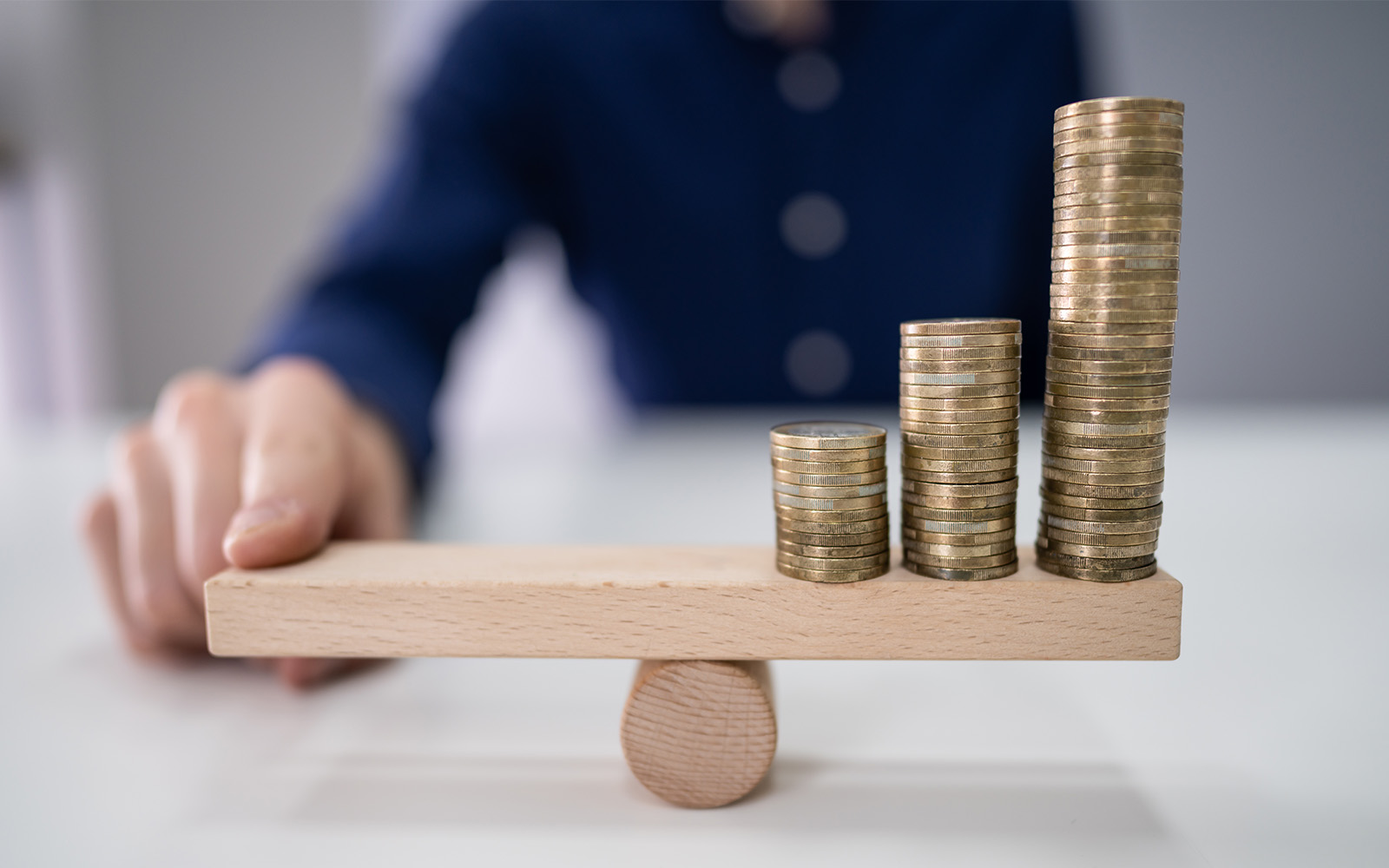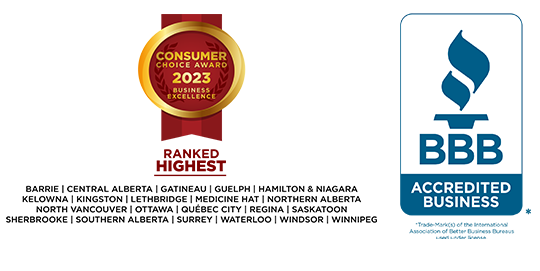How a Bankruptcy or Consumer Proposal can help balance the scales
Canadian law seemingly takes two contradictory positions on consumer debt:
One position says individuals have a civic and moral duty to repay money they borrow in a timely and responsible fashion. Creditors have several options to pursue debtors who do not repay their debts as agreed, ranging from collections calls to court judgements and wage garnishments.
The other position says individuals who are overburdened with debt deserve relief and the opportunity for a financial fresh start. Debtors who cannot repay their debts on time and in full may achieve permanent relief through either of two insolvency options (Bankruptcy or Consumer Proposal) offered under the Bankruptcy and Insolvency Act (BIA).

However, these positions are not contradictory at all. Rather, they complement each in several important ways to balance the scales and keep the economy flowing.
- Creditors have significant financial, contractual, and social leverage over debtors — including broad discretion to determine (a) how much a person qualifies to borrow, (b) at what interest rate, and (c) within what repayment terms.
- Heavily indebted debtors often face a moral dilemma between honoring their commitment to repay outstanding debts and providing the necessities of life (e.g. food, shelter, heat, water, etc.) for themselves and their family.
- A regimented and legally binding option to address problem debt ensures debtors can get the relief they need, and creditors receive at least partial repayment of their capital investment.
Who is eligible for a Bankruptcy or Consumer Proposal?
A consumer debtor who wants to file a Bankruptcy or Consumer Proposal must meet the definition of insolvent person pursuant to section 2 of the BIA, which states the debtor must:
- Reside, carry on business, or have property in Canada
- Owe at least $1,000 to one or more unsecured creditors
- Not be able to meet financial obligations (i.e. minimum debt payments) as they become due
- Have stopped paying current financial obligations in the ordinary course of business
- Not have sufficient property to satisfy the total value of their outstanding debts
What is a Consumer Proposal and how does it work?
A Consumer Proposal is a legally binding debt settlement and consolidation process offered through the BIA. The process typically involves a Licensed Insolvency Trustee (LIT) reviewing a debtor’s financial situation and proposing a reduced debt amount to creditors which the debtor can afford based on their income, household expenses, personal, family and employment situation.
The debtor has the option to repay this amount — which is often half their original debt or less —as a single lump sum, or in interest free monthly installments over a period of up to five years. All payments are made to the Licensed Insolvency Trustee who then disburses funds to creditors who have proven a claim in the proposal. Once a majority of unsecured creditors (in dollar value) vote to accept a Consumer Proposal, the proposal is legally binding on all unsecured creditors — with the exception of certain debts such as child or spousal support payments pursuant to a written agreement or court order.
The filing of a Consumer Proposal puts an immediate stay of proceedings on all current and future collections action, court judgements, and wage garnishments. The stay ends upon full performance of the Consumer Proposal unless the debtor defaults in payments — in which case the proposal will automatically be deemed annulled.
A Consumer Proposal is available to individuals who meet the definition of insolvent person pursuant to section 2 of the BIA and who owe $250,000 or less, excluding the mortgage on their principle residence. A debtor can also file a joint Consumer Proposal (i.e. debtor and spouse) in which case the joint debts cannot exceed the current prescribed amount of $500,000.
Advantages of a Consumer Proposal
- Debtor can retain assets that would otherwise be available to creditors in a Bankruptcy
- Flexible repayment period
- A single, affordable monthly payment (if not paid in a lump sum)
- Increase in income does not impact the payment terms of the Consumer Proposal
- No up-front fee to file a Consumer Proposal
- Less stigma than a Bankruptcy
What is Bankruptcy and how does it work?
Bankruptcy is a legally binding debt relief process offered through the BIA which typically involves a debtor surrendering certain non-exempt assets and potentially a portion of their income to an LIT. The Trustee will liquidate (i.e. sell) the assets and distribute the funds to proven creditors on a priority basis.
The typical Bankruptcy process is shorter than a Consumer Proposal — which may last as little as nine months for a first time Bankruptcy (21 months if the bankrupt is required to make surplus income payments to the estate).
The fees to file a personal Bankruptcy is Canada are regulated by the government.
What is required of a Bankrupt person?
A bankrupt must comply with the duties of a bankrupt pursuant to section 158 of the BIA as a condition of receiving a discharge from bankruptcy. These duties include, but are not limited to:
- Disclosing all property to the LIT
- Delivering all non-exempt property to the LIT
- Providing the LIT with certain records or statements (i.e. RRSP, RRIF, RESP, insurance policies, tax returns, notices of assessment, etc.)
- Delivering credit cards to the LIT for cancellation.
- Attending two mandatory financial counselling sessions.
- Reporting monthly household income and expenses to the LIT to determine surplus income payable
- Making all required surplus income payments to the Bankruptcy estate
- Attending a meeting of creditors (if required)
- Attending for an examination by the Office of the Superintendent of Bankruptcy (if required)
- Advising the LIT of any change in residence until such time that the administration of the Bankruptcy estate is completed
How to decide between a Bankruptcy or Consumer Proposal
Every Life-Changing Debt Solution begins with a Free Confidential Consultation with a Licensed Insolvency Trustee to review a debtor’s situation and their options for a financial fresh start. The LIT will consider a wide range of factors before recommending the best course of action, including:
- Are creditors likely to accept a Consumer Proposal that fits within the debtor’s budget?
- Are creditors likely to contest a debtor’s discharge from Bankruptcy for any foreseeable reason?
- Would the debtor prefer to keep certain non-exempt (by purchasing the LIT’s interest in the asset(s)) that they would have otherwise have to surrender in a Bankruptcy?
- Is the debtor’s income likely to change over the next several months (an increase may make a Consumer Proposal a better option, a decrease may favour Bankruptcy)?
Ultimately, there is not a universally right or wrong answer when considering a Bankruptcy or Consumer Proposal. The most viable option is the one that is most affordable to the debtor based on the debtor’s income, household expenses, personal, family, and employment situation.

